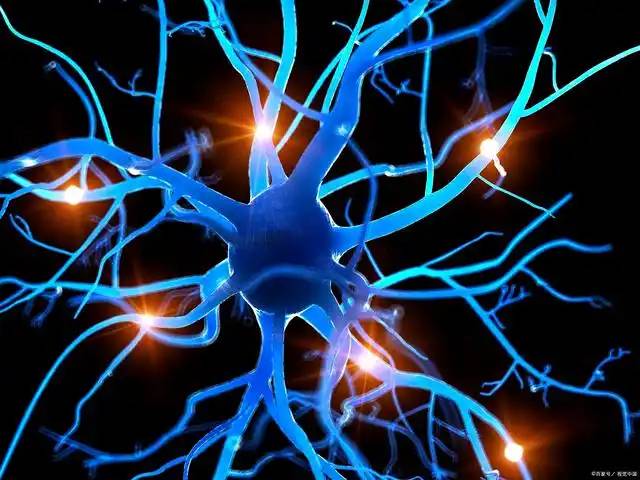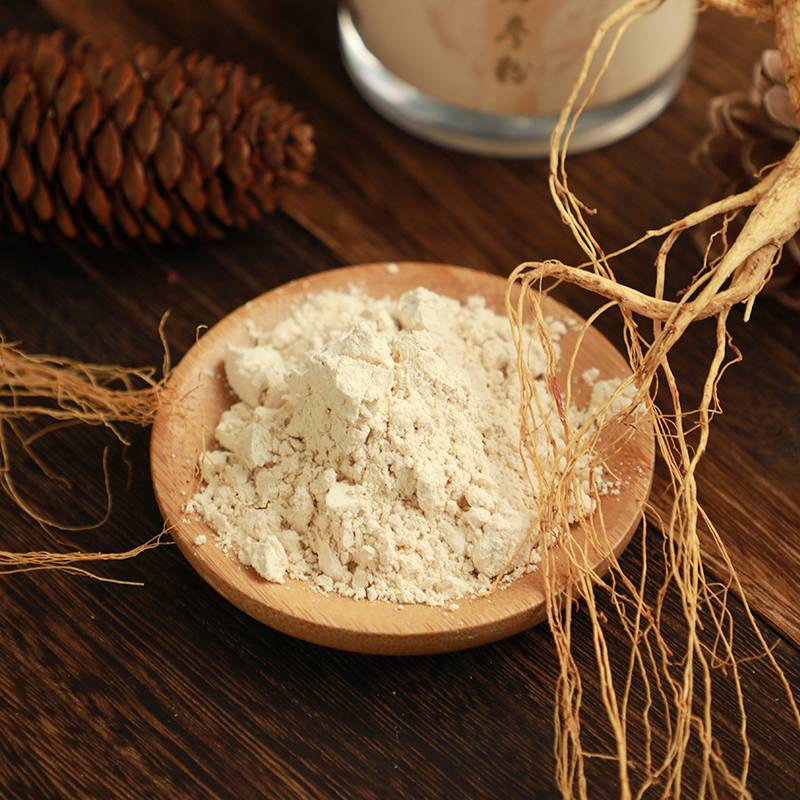Ginsenoside Rb1과 우울증에 관한 연구
우울증은 현재 많은 관심을 받고 있는 정신질환이다.그것의 핵심 증상은 명백한 기분 저하, 쾌감 상실, 그리고 비정상적인 식습관과 수면 습관이다.일반적으로 생물학적 요인, 유전적 요인, 환경적 요인, 심리적 요인 등이 복합적으로 작용하여 발생하는 것으로 알려져 있다.세계보건기구 (who)에 따르면 우울증 [1] 환자의 신체적 또는 정신적 장애가 증가함에 따라 우울증은 세계적으로 가장 부담스러운 질병 중 하나가 되었다.이로 인한 스트레스는 환자와 가족에게 고통을 초래할 뿐만 아니라 거시적 관점에서도 사회발달에 부정적인 영향을 미친다.현재 우울증에 대한 임상치료에는 대개 약물치료와 심리치료가 포함된다.약물 치료의 관점에서 볼 때, 일반적으로 사용되는 모노아민 산화효소 억제제나 삼환계 항우울제와 같은 항우울제는 환자의 순응도가 떨어지고, 단일 표적이 되며, 많은 부작용 [2] 등의 단점이 있다.
수많은 고대 의학 문헌에 기록된 것처럼 한의학으로 우울증을 치료한 경험이 풍부하다.전통 한약의 화학 조성의 복잡성과 약리학 대상의 다양성으로 인해 전통 한약의 독특한 이론 지도 및 변증법적 사고와 결합하여 천연 약재의 항우울제 효과와 전통 한약 제조법이 점점 더 많은 관심을 끌고 있습니다.인삼 has been known since ancient times 에서China as 이“king 의herbs” 그리고is a supreme Chinese herbal medicine with 이functions 의nourishing y에서그리고replenishing life, strengthening 이vital energy 그리고consolidating 이foundations. 이Shennong Bencao Jing (the Divine Husbandman's Classic 의the Materia Medica)에는 인삼이"주로 다섯 가지 내장을 보양하고, 마음을 안정시키며, 심신을 안정시키고, 두근거림을 멈추게 하며, 시력을 좋게하고, 정신과 지력을 원기 회복시킨다"고 되어 있다.
그것의 생물학적 활동은 증가 활력, 개선 된 스트레스 저항, 노화 방지 특성 및 면역 odulatory 활성을 포함한다.또한, 인삼은 허혈증/재관류 손상의 예방, 알츠하이머 & 등 다양한 신경 영양 및 신경 보호 효과가 있습니다#39, s 병과 항우울제 효과.주요 활성 성분은 진세노사이드 (ginsenosides)이다.많은 학자들은 동물 모델과 행동 실험을 통해 ginsenosides, ginsenosides Rg1, Rb1, Re, Rg3등과 그들의 대사 산물인 protopanaxadiol [20(S)-protopanaxadiol] 모두 특정 항우울제 효과가 있다는 것을 발견했습니다.작용 기전은 시상하부-뇌하수체-부신 (HPA) 축과 모노아민 신경전달물질 (MA) 조절을 포함한다.
우울증 치료에서 ginsenosides의 작용기전 1
우울증의 원인은 현재 명확하지 않으며, 이에 대해서는 여러 가지 설이 있다.대부분의 연구는 신경내분비계, 신경면역계, 신경전달계, 신경영양성 물질에 집중되어 있다.이러한 가설들은 HPA 축의 기능장애, 모노아민 신경전달물질 및 그 수용체의 조절장애, 신경가소성 및 신경재생의 조절장애, 염증인자의 분비증가와 관련이 있다.ginsenosides의 항우울제 기전은 주로 HPA 축의 조절 장애를 개선하고, 뇌 유래 신경영양인자 및 모노아민 신경전달물질의 수준을 증가시키며, 사이토카인의 비정상적인 발현을 감소시키는 것과 관련이 있다고 문헌에서 보고되었다 (그림 1).
1.1 HPA 축의 기능을 조절함으로써 뇌유래 신경영양인자 (brain-derivedneurotrophic factor)를 증가시킨다
최근 HPA 축이 다양한 정서 및 인지 장애의 병태 생리에 관여한다는 연구 결과가 많이 발표되고 있다.신경내분비 연구에 따르면 HPA 축은 주요 우울증 환자에서 과다하게 활동하며, 우울증 발생과 HPA 축 기능장애 사이에는 일정한 관계가 있다고 한다 [3].스트레스는 HPA 축의 과잉활동을 유발하여 부신피질에서 글루코코르티코이드의 분비를 증가시킨다.어떤 학자들은 두 종류의 성분의 약리학적 효과를 기술하고 요약하였는데,ginsenosides와 saponins, HPA 축을 조절하는 관점에서.우울증은 주로 HPA 축의 음성 피드백 조절 메커니즘이 손상되어 발생하며, 과도한 글루코코르티코이드 분비에 의해 신경세포가 손상된다 [4].또한, 우울증 환자의 혈장뇌유래 신경영양인자 (BDNF) 수준이 저하되고, 자살생각을 가진 우울증 환자의 말초단핵세포의 BDNF mRNA 함량이 정상인에 비해 유의하게 낮은 것으로 연구결과가 나타났다.또한 우울증의 심각성이 깊어질수록 BDNF mRNA 함량이 더 많이 감소한다는 것이 밝혀져 BDNF 가 우울증 발병에 중요한 역할을 한다는 것을 확인하였다 [5].

류등 6명은 쥐의 혈청 및 뇌조직에서 corticosterone (CORT), glucocorticoid receptor (GR), mineralocorticoid receptor (MR) 및 BDNF mRNA의 수치를 측정하여 ginsenosides의 항우울제 효과의 기전을 조사하였다.그 결과, 만성적인 예측 불가능한 스트레스를 6주 후에 받은 쥐들은 우울행동인 강제수영검사 (FST)에서 sucrose 선호지수가 유의하게 감소하고 부동 시간이 유의하게 증가하였다.이후 생화학적 검사 결과, 우울증유사행동을 보인 쥐의 혈청 내 CORT 수준은 증가하였고, 해마의 GR, 해마의 BDNF, 대뇌피질의 mRNA 수준도 유의하게 감소하였다.또한 우울증 모델을 준비하여 3회 (12.5, 25 및 50 mg·kg-1)의 ginsenosides를 6주간 투여하였을 때, ginsenosides 가 만성 스트레스로 인한 쥐의 우울증적 행동과 생화학적 변화를 유의적으로 개선시킬 수 있음을 알 수 있었으며, 투여량이 증가할수록 그 효과는 더욱 분명해졌다.이는 ginsenoside&의 메커니즘을 시사한다#39;s 항우울제 효과는 HPA 축의 기능을 조절하고 해마와 대뇌피질에서 BDNF mRNA 수준을 증가시키는 것과 관련이 있을 수 있다.
1.2사이토카인을 조절하고 성상세포의 수를 변화시킴으로써 항우울제 효과
우울증에 따른 면역체계의 활성화 역시 연구자들로부터 많은 관심을 받고 있다.가장 큰 특징은 환자 &의 증가#39; s 혈장 수준의 종양 괴 요인-α (TNF-α)과 interleukin-1 β (IL-1 β)다.이 러한 비정상적으로 표명 cytokines 몸에 핵 전사의 하류 신호 분자 경로를 활성화 할 수 있 요인-κ B (핵 팩 터-κ B,NF-κ B), 신호 전송 blood-brain을 통해 중앙 신경 시스템에 대한 장벽을과 중앙 뉴런의 균형에 영향을 미 칠 활동, 그렇게 함 으로써 가속 우울 증상의 개발이다.우울 증상이 현저히 호전된 환자들은 IL-6 수치가 현저히 낮으며 [7], 따라서 사이토카인 분비를 감소시켜 우울증을 치료할 수 있음을 나타낸다.
성상세포 (AS)는 중추신경계 (CNS)의 주성분 중 하나이며 CNS 질환과 밀접하게 연관되어 있다.이들은 뉴런에 대한 장기적인 영양 지원 효과를 갖는 신경영양인자를 함유하고 있다.항우울제에 대한 연구에서, 항우울제 효과가 신경보호, 신경재생의 촉진 및 성상세포의 보호와 같은 기전과 관련이 있을 수 있다는 사실이 종종 발견된다.포도당의 형태로 에너지를 공급하는 성상세포는 글루탐산 수송과 대사에 관여하고, N-methyl-D-aspartate 수용체의 활동을 조절하며, 염증 반응의 불균형을 조정한다.성상세포의 기능장애는 우울증의 발병에 기여하는 요인 중 하나이다.
등 8)은 lipopolysaccharide (LPS)로 유도된 신경염증성 우울증 모델을 이용하여 항우울제를 평가하였다인삼총사포닌 (GTS)의 효과다.그 결과의 회복 LPS-induced GTS 하여 우울 동작을 병행 된 한의 수준의 감소 가 있었IL-1 β, IL-6, 그리고 TNF-α와 쥐의 해마에 우울 모델이다.그리고 GTS 가 LPS에 의해 자극된 마우스에서 다양한 염증유발인자의 생성을 유의적으로 억제할 수 있음을 발견하였다.첸 등 9인은 실험을 통해 GTS 투여가 코르티코스테론 투여로 인한 우울증과 같은 행동에 상당히 대응할 수 있다는 것을 발견했다.GTS의 고용량은 corticosterone에 의해 유도된 glial fibrillary 산성단백질 양성 (GFAP+) 성상세포수와 해마 용적의 감소를 역행시킬 수 있으며, GFAP+ 세포 돌출 길이 및 GFAP 투여군에서 세포질 용적의 감소에서 현저한 개선을 발견할 수 있었다.이는 해마 성상세포의 구조적 가소성의 관점에서 인삼의 항우울제 효과를 보여준다.
1.3 뇌의 모노아민 신경전달물질 함량 증가
우울증의 모노아민 (monoamine) 신경전달물질 이론은 세로토닌 (5-hydroxytryptamine, 5-HT)과 같은 MA의 분비감소가 반영되어 이와 관련된 수송체, 수용체 및 효소의 비정상적인 변화를 동반하는 도파민성 신경계 및 아드레너성 신경계의 기능이상을 포함한다.He 등은 고성능 액체크로마토그래피를 이용하여 우울증과 동반성 불안장애를 동반한 우울증에서 혈중 모노아민 신경전달물질 및 그 대사산물의 수치를 측정하였다.그 결과 우울증 환자의 노르에피네프린과 에피네프린의 혈청 농도가 대조군에 비해 유의하게 낮은 것으로 나타났다.이 실험을 통해 우울증이 모노아민 신경전달물질의 감소에 의해 발생한다는 가설을 확인했다.
Jiang et알다.[11] gave dammarane sapogen에서(DS), a ginseng 활성ingredient, to 쥐에서the 만성적인예측할 수 없는 경증스트레스(CUMS) model 그리고found that oral administrati에의DS significantly improved 우울behavior compared to 쥐에서the 우울증model. Biochemical analysis 의bra에서tissue and serum showed that DS treatment restored the decline 에서the concentrations of 해마neurotransmitters caused 에 의해CUMS, including serotonin, dopamine (DA), norepinephrine (NE), and amino butyric acid. This confirmed that ginseng can exert an 항우 울 제효과by increasing the content of monoamine neurotransmitters in the brain.
2 항우울효과가 있는 인삼의 활성성분입니다
인삼은 Araliaceae에 속하는 식물 Panax 인삼 C.A. Mey의 뿌리이다.사포닌은 인삼의 주요 활성 성분으로 꼽힌다.인삼 사포닌은 그 구조에 따라 원삼디올, 원삼트리올, 올레아놀산 그룹으로 나눌 수 있다.주요 프로토파나 사디올은 Rb1, Rc, Rd, 및 Rg3;주요 프로토파낙사 트리올은 Re, Rf, Rg1, Rg2, Rh1;그리고 올레아놀산은 Ro.지금까지 진세노사이드 및 진세노사이드 단량체 또는 아글리콘의 항우울제 효과와 작용 기전에 대한 광범위한 연구가 있었다.
인삼 사포닌 2.1
진세노사이드의 항우울효과에 대한 연구에서 인삼 사포닌은 대부분 동물실험에서 항우울효과가 있는 것으로 나타났다.천 교수 등은 코르티코스테론 피하주사로 유도한 GTS를 생쥐에게 22일 연속 투여한 결과 높아진 혈청 코르티코스테론 수치를 변화시키지 않고도 생쥐의 우울증과 같은 행동을 완화시키는 것을 발견했다.메커니즘 연구 측면에서 당 등 (13)은 GTS의 항우울제 효과를 탐색하기 위해 FST와 만성 경한 스트레스 (CMS) 라는 두 가지 고전적인 동물 모델을 사용하였다.GTS 가 FST에서 생쥐의 휴식시간을 유의하게 단축시켰으며, CMS rats&도 역전시키는 것이 관찰되었다#39;기아환경에서의 설탕물 선호지수와 이동운동활동의 감소 및 먹이주기 지연시간의 연장.또한 GTS는 CMS에 의해 유도된 해마에서 monoamine 신경전달물질의 농도와 BDNF 발현의 감소를 거의 완전히 반전시켜 그 항우울제 기전이 해마에서 monoamine 신경전달물질의 농도와 BDNF 발현의 증가에 의해 매개될 수 있음을 보여주었다.
인삼 사포닌 Rg1 2.2
인삼 saponin Rg1인삼의 생물학적 활성을 많이 보유하고 있는 인삼의 대표적인 성분이다.Huang 등 (14)은 쥐에게 각기 다른 용량의 Rg1을 투여했고 세 투여군 모두 급성 스트레스 실험에서 FST 에서의 부동성 시간을 유의하게 감소시킨다는 것을 발견했다.만성 스트레스 후 Rg1의 3회 투여 모두 FST 내 쥐의 부동시간을 유의적으로 감소시켰고, 설탕물 선호도 검사에서 설탕물 섭취 비율을 증가시켰으며, 동물들의 수면시간을 연장시켰다.Zhu 등 [15]은 sucrose preference와 강제로swimming으로 측정한 ginsenoside Rg1이 장기간 투여 후 우울증 모델에서 쥐의 우울증유사행동을 유의하게 개선시킨 것을 발견하였다.또한 ginsenoside Rg1은 반응요소결합단백질 (CAMP-response element binding protein, CREB)의 인산화 수준을 매개하여 전전두엽 피질에서 신경영양인자의 발현을 증가시킴으로써 항우울제 효과를 발휘한다는 것이 밝혀졌다.
Mou 등 16)은 마우스 CUMS 모델과 생식선 절제술 모델을 이용하여 Rg1의 항우울제 효과를 추가적으로 검증하고 분석하였다.그 결과 Rg1은 강제수영과 꼬리정지 실험에서 쥐의 부동성 시간을 유의하게 감소시켰으며, 쥐의 혈청 코르티코스테론 수치를 감소시키고, 혈청 테스토스테론 수치를 증가시켰으며, 전전두피질과 해마의 GR 단백질 수치를 증가시켜, ginsenoside Rg1이 HPA와 시상하부-뇌하수체-성선 (HPG) 축을 조절함으로써 항우울제 활성을 나타낼 수 있음을 확인하였다.Rg1이 쥐에서 우울증유사행동을 현저히 감소시킬 수 있는 메커니즘도 다음과 같이 설명되었다:장기간의 Rg1치료는 전두엽 피질내 성상세포내 간극접합부의 미세구조를 개선할 수 있으며, 이는 뇌의 간극접합부의 기능적 활동에 긍정적인 영향을 미쳐 Rg1이 전두엽 피질내 성상세포 간극접합부의 기능을 보호함으로써 항우울효과를 발휘할 수 있음을 의미한다 [17, 18].
일부 학자들은 전송전자현미경을 이용하여 배측편도체 (BLA)에서 뉴런의 시냅스를 관찰하고 시냅스 가소성 관련 단백질인 CREB와 BDNF를 검출하였다.이 결과는 ginsenoside Rg1이 BLA 내 CREB-BDNF 계를 활성화시킴으로써 신경보호 및 항우울제 효과를 가질 수 있음을 시사한다.그것의 우울증 유사 행동의 개선은 basolateral amygdala [19]의 시냅스 관련 인자 miR-134의 조절을 포함할 수 있다.또한 Fan 등 [20]은 ginsenoside Rg1의 만성 전처리가 pro-inflammatory factors의 과발현 및 microglia와 성상세포의 활성화를 감소시킴으로써 염증경로의 활성을 현저히 억제하여 CUMS 모델에서 쥐의 우울행동을 감소시킬 수 있음을 발견하였다.
2.3인삼 사포닌 Rb1
왕et알다.[21] found that in the CUMS depression model, after ginseng saponin Rb1 was administered for 21 consecutive days, the levels of monoamine neurotransmitters such as NE, 5-HT, and DA and their metabolites, 5-hydroxyindoleacetic acid, were significantly upregulated in rats, thereby exerting an antidepressant effect. Liu et알다.[22] found that rats subjected to 만성적인stress showed reduced locomotor activity in the open field test, and that the percentage of sucrose preference and the biochemical detection of hippocampal-amygdala microtubule-associated protein 2 (MAP-2) levels were also lower than those of the control group. However, in rats treated with ginsenoside Rb1, all of the above indicators were lower than the control group, but higher than the model group, indicating that ginsenoside Rb1 may produce an antidepressant effect by affecting the expression of MAP-2in the 해마and amygdala.
최근 연구에 따르면 LPS-prepared depressive C57BL/6J마우스 모델과 결합한 CUMS에서 Rb1을 처리한 마우스의 부동 시간이 강제 수영 및 꼬리 정지 실험에서 유의하게 단축되었으며, 혈청 corticotropin 및 CORT 수치에서 유의한 감소가 있었다.게다가, 고용량의 Rb1 높 아진 TNF-α 염증 성을 성공적으로 되돌 릴 요인과 감소 BDNF 표현 쥐의 해마에서 우울증 모델 [23]이다.따라서 ginsenoside Rb1은 HPA 축, 염증경로 및 BNDF를 조절하여 항우울제 효과를 발휘하는데 관여할 수 있을 것으로 생각된다.
2. 4 다른
약리학적 연구에 따르면 쥐가 20(S)-protopanaxadiol [20(S)-PPD]을 경구적으로 섭취한 후, TST, FST 및 후각bulbectomy 실험에서 생성되는 항우울제 효과는 fluoxetine과 비교할 수 있는 것으로 나타났다.또한 20(S)-ppd 처리 후각불소절제술 동물은 약물을 투여하지 않은 동물에 비해 뇌의 MA 수치가 높았으며, fluoxetine처럼 후각불소절제술 우울증 모델 동물에서 뇌조직의 산화적 스트레스 능력을 크게 감소시키지 않으며, 후각불소절제술 수술을 받는 동물의 혈청 내 cortisol 농도의 증가를 억제하여 동물&의 정상적인 기능을 방해할 수 있다#39;s 중추 신경계, 20(s)-PPD 가 항우울제 약물 개발에 대체 성분으로 사용될 수 있음을 제안 [24].

Ginsenoside Rg3 is the main component of red ginseng, and has neuroprotective, neurotoxic resistance, and antidepressant 효과on the central nervous system. Some scholars have found that in the FST and TST, the immobility time of mice given ginsenoside Rg3 was significantly lower than that of the blank control group, and that Rg3 completely reversed the down규정of the 해마BDNF signaling pathway induced by 만성적인social defeat stress, and that the antidepressant effect of Rg3 could be blocked by BDNF signaling pathway inhibitors.
진세노사이드 Rg3의 항우울제 효과는 해마 BDNF 신호전달 경로 [25]의 상향조절과 관련이 있음을 알 수 있다.면역 조절 관점에서 Rg3는 생쥐의 lps로 유발된 우울감 유사 행동에 상당한 개선 효과가 있으며, 해마의 트립토판과 세로토닌의 대사 장애를 개선하고, 동시에 pro-inflammatory cytokine과 tumor necrosis factor의 수치를 감소시켜 Rg3가 면역 활성화로 인한 우울감 유사 행동을 효과적으로 개선할 수 있음을 시사한다 [26].또한, 진세노사이드 Re는 쥐의 중추성 노르아드레네르계 (noradrenergic system)를 조절함으로써 스트레스로 인한 행동 결함을 상당히 극복할 수 있다 [27].Ginsenosides Rg2와 Rg5는 생쥐에서 항우울제와 같은 효과를 낼 수 있으며, 이는 해마 BDNF 신호전달 경로를 촉진함으로써 부분적으로 매개된다 [28,29].
3 결론
Depression is an affective disorder. Even though its incidence has been on the rise in recent years, there is still no consensus on its pathogenesis. The use of biochemical indicators to evaluate the 효능of antidepressants is not perfect. To date, synthetic drug therapy remains the classic weapon 반대depression, but antidepressant drugs generally have the problems of taking a long time to take effect, causing relapses easily, and having many adverse reactions. Research from the perspective of traditional Chinese medicine or natural products has provided new ideas for more and more scholars exploring and developing more ideal antidepressants. Ginseng is a traditional Chinese medicine with the 효과of tonifying the vital energy, nourishing the spleen and lungs, generating body fluids, calming the mind and improving intelligence. A large number of studies have proven that ginsenosides have significant efficacy in the treatment of depression. Ginsenoside Rg1 is currently the most researched ingredient, and there are various explanations for the mechanism by which it mediates its antidepressant effect. However, there is still room for further exploration of the mechanisms and pathways by which many other active ingredients, such as Re, Rg2 and Rg5, exert their effects, and there is a lack of comparative studies on the efficacy of different ginsenosides.

The non-saponin components 인삼의can also be explored for their antidepressant effects. In addition, a literature review found that in the past decade, there has been a wealth of basic research on the antidepressant activity of individual ginsenosides. On this basis, researchers have begun to turn their attention to pre임상studies of ginseng-related Chinese herbal formulas or drug pairs. For example, a modified Chinese herbal formula PAPZ,which uses ginseng, angelica, polygonatum, and prickly pear as raw materials, has recently been shown to have a therapeutic effect on the corticosterone-induceddepression model in mice by increasing BDNF protein expression and enhancing brain antioxidant capacity [30]. Zhu Shuwei et알다.[31] proposed the concept of antidepressant pairs in the hope of breaking through the bottleneck of modern research on the complex compatibility rules of traditional Chinese medicine prescriptions. At the same time, it was mentioned that there has been very little research on ginseng-related pairs, such as ginseng-angelica. Given that most current clinical antidepressants target a specific site, the diversity ginsenoside의antidepressant mechanisms highlights a significant advantage. Therefore, with further research into the antidepressant effects of ginsenosides, and based on the research into the efficacy of ginsenoside monomers, attempts can be made to develop new antidepressant-related drugs from traditional Chinese medicine, with the aim of ginseng playing a greater role in the treatment of depression and other related emotional disorders.
참조
[1]Smith K. 「 Mental health:a world of depression 」 (J.자연, 2014, 515:181.
[2] 장 F, 진 XM, 뒤 GH 외.체내 항데pres-sants 대사 연구 진행 [J.Acta Pharm Sin, 2017, 52:1791-1800.
[3]Keller J,Gomez R, Williams G 외.주요 depres-sion의 HPA 축: 코 르 티 솔 clinical 보였 and 유전 변이는 인지를 예측한다 [J].Mol 정신의학, 2017, 22:527-536.
[4]리 H, Liu SY, 왕 B. 진행 of the regulation effect HPA 축에 있는 ginsenosides의 [J].Acta Pharm Sin, 2014, 49:569-575.
[5]Lee BH, Kim YK.말초혈액 단핵세포의 BDNF mRNA 발현은 최근 자살을 시도했거나 시도하지 않은 우울증 환자에서 감소하였다 [J].J Affect Disord, 2010, 125:369-373 참조.
[6] 류 LQ, 루오 Y, 장 RR 외.ginsenosides 가 hypo-시상-뇌하수체-아드레날기능 및 뇌derivedneurotrophic factor에 미치는 영향 (Effects of ginsenosides on hypo-시상-뇌하수체-아드레날기능 및 뇌derivedneurotrophic factor in rats 에 노출 된 chronic 예측 할 수 없는가 벼 운 stress [J]다.중국 J Chin Mater Med, 2011, 36:1342-1347.
[7]Lou JS, Yang XC,Fang J 등.부제:The mediation of immune activa-tion on serotonin and glutamate systems in pathological process of depression [J].Chin Pharmacol Bull, 2009, 25:1555-1558.
[8]An K, Hao H, Xiao Z 등이 있다.말초 항염증 효과는 나쁜 뇌 분포와 사이의 ginsenosides paradox를 설명한다 anti-depression efficacy [J]다. J Neuroinflammation, 2011, 8:100 쪽.
첸 [9]. L, 왕 X린 X 외.인삼총량의 예방 효과 saponins on chronic corticosterone-induced 장애에 astrocyte 구조 소성 and hippocampal 위축 [J]다.Phytother Res, 2017, 31:1341-1348.
[10] 그는 YC, 장 B, 자 W, et al. 값 의 혈청 동반성 불안 및 우울증과 주요 우울 장애의 진단에서 monoamine 신경 전달 물질 및 그들의 대사 산물.J Third Mil Medi Univ, 2014, 36:806-810.
[11] 장엔, 장 BY, Dong LM, 외.dammarane의 항우울제 효과 sapogenins in chronic unpredictable mild 스트레스 유발 우울증 생쥐 [J.Phytother Res, 2018, 32:1023-1029.
첸 [12] L, Dai J, 왕 Z, et al. The antidepressant effects of ginseng 총 saponins in 남성 C57BL/굉장 mice by 해마을 강화 억제의 인산 화 GSK-3 β다 [J다]Phytother Res, 2014, 28:1102-1106.
[13] 당 H, 첸 Y, 류 X 등.인삼총액의 항우울제 효과 saponins in the forced 수영 테스트 and chronic 가 벼 운 스트레스 모델 of depression [J]다. Prog 신경정신의학 BiolPsychiatry, 2009, 33:1417-1424.
[14] 황 Q, 추 SF, 리안 XY 등.진세노사이드 Rg1의 항우울제 유사효과와 그 메커니즘 [J.Acta Neuropharm, 2013, 3:1-11.
[15] Zhu X, 가 오 R, 류 Z, et al. 진세노사이드 Rg1 반전 스트레스-유도 depression-like 행동 and brain-derived 신경-전두엽 피질 내에서 영양인자 발현 [J]다.Eur J Neurosci, 2016, 44:1878-1885.
[16] Mou Z, 황 Q, 추 SF, 기타.HPA와 HPG 축의 조절을 통한 진-세노사이드 Rg1의 항우울효과 [J]다.Biomed Pharmacother, 2017, 92:962-971.
[17] 진 C, 왕 ZZ, 조우 H 등.Ginsenoside rg1-유도 antide-pressant 효과는 내부의 성상세포 간극 접합부의 보호를 포함한다 the 전두엽 피질 [J]다. Prog 신경정신의학 Biol Psychiatry, 2017, 75:183-191.
[18] 렌 Q, 시아씨, 왕 ZZ 등.corticosterone 유발 원발성 성상세포 손상에 대한 ginsenoside Rg1의 보호효과 (J.Acta Pharm Sin, 2017, 52:1410-1415.
[19] 유 H, 팬 C, 양 L 외.Ginsenoside Rg1은 쥐의 만성적인 스트레스로 인한 우울증 유사 행동과 신경세포 구조적 가소성을 예방한다 [J].세포생리학 Biochem, 2018, 48:2470-2482.
[20] 팬 C, 송 Q, 왕 P 등.ginsen-oside-rg1의 신경보호 효과 against depression-like 행동 을 통해 쥐의 신경교질 활성화, 시냅스 결손, 신경세포 사멸 억제 [J.Front Immunol, 2018, 9:2889.
[21]Wang GL, He ZM, Zhu HY 등.serotonergic, noradrenergic 및 dopaminergic 시스템의 관여는 항우울제 유사 효과 진세노사이드 Rb1의, 중요 한 active 재료 파낙스 인삼 C.A. 마이어 [J]의.J Ethnopharmacol, 2017, 204:118-124.
[22] 류 J, 짱 W,위안 Y 등.ginsenoside Rb1이 발현에 미치는 영향 of 포 스 MAP-2 in 해마 CUMS 쥐의 편도체도 [J]다.J Liaoning Univ Tradit Chin Med, 2016, 18:47-49.
[23]Lu YY, Zhu MJ, Ni LN, 등이 있다.생쥐에서 CUMS + LPS 유도 우울증 모델 확립 및 ginsenoside Rb1의 항우울제 메커니즘 연구 [J]다.J Yantai Univ (Nat Sci Engine Edit), 2019, 32:146-150.
[24] Xu 활성 인삼 대사 산물인 C, Teng J, Chen W, 등 20(S)-Protopanaxadiol은 동물에서 강력한 항우울제 유사 효과를 나타냅니다 테스트 [J]다. Prog Neuropsychopharmacol Biol 정신의학, 2010, 34:1402-1411.
[25]You Z, Yao Q, Shen J 등.긴센-오사이드의 항우울제 유사 효과 Rg3 in mice 을 통해 활성화 of the hippocampal BDNF 신호계통 [J.J Nat Med, 2017, 71:367-379.
[26] 강 A,시 T, 주 D, et al.쥐의 lipopolysaccharide-induced depression-like behavior 및 신경염증에 대한 ginsenoside Rg3억제 효과 [J]다.J Agric Food Chem, 2017, 65:6861-6869.
[27]Lee B, Shim I, Lee H 등이 있다.ginsenoside Re 가 쥐의 반복적인 고정화에 의해 유발된 우울 및 불안유사행동과 인지기억결손에 미치는 영향 [J]다.J Microbiol Biotechnol, 2012, 22:708-720.
[28] 렌이, 왕 JL, 장 X 외.우울증의 만성 가벼운 스트레스 모델에서 진세노사이드 Rg2의 항우울제 유사 효과.Brain Res Bull, 2017, 134:211-219.
[29] Xu D, Wang C, 자 오 W, et al. Antidepressant-like effects of ginsenoside Rg5 in 쥐: 관련 된 of hippocampus BDNF 신호경로 [J.Neurosci Lett, 2017, 645:97-105.
[30]Chen H, Huang Q, 장 S, 외.중국 허브 포뮬라 PAPZ 감면 행동 기형 in depressive 쥐다 [J다]영양소, 2019, 11:859.
[31] 주 SW, 가오 XX, 티안 JS 외.중국 전통 항우울제 herb-pair 연구 진행 [J]다.액 타 vita Sin, 2019, 54:235-244.


 영어
영어 프랑스
프랑스 스페인
스페인 러시아
러시아 한국
한국 일본
일본




